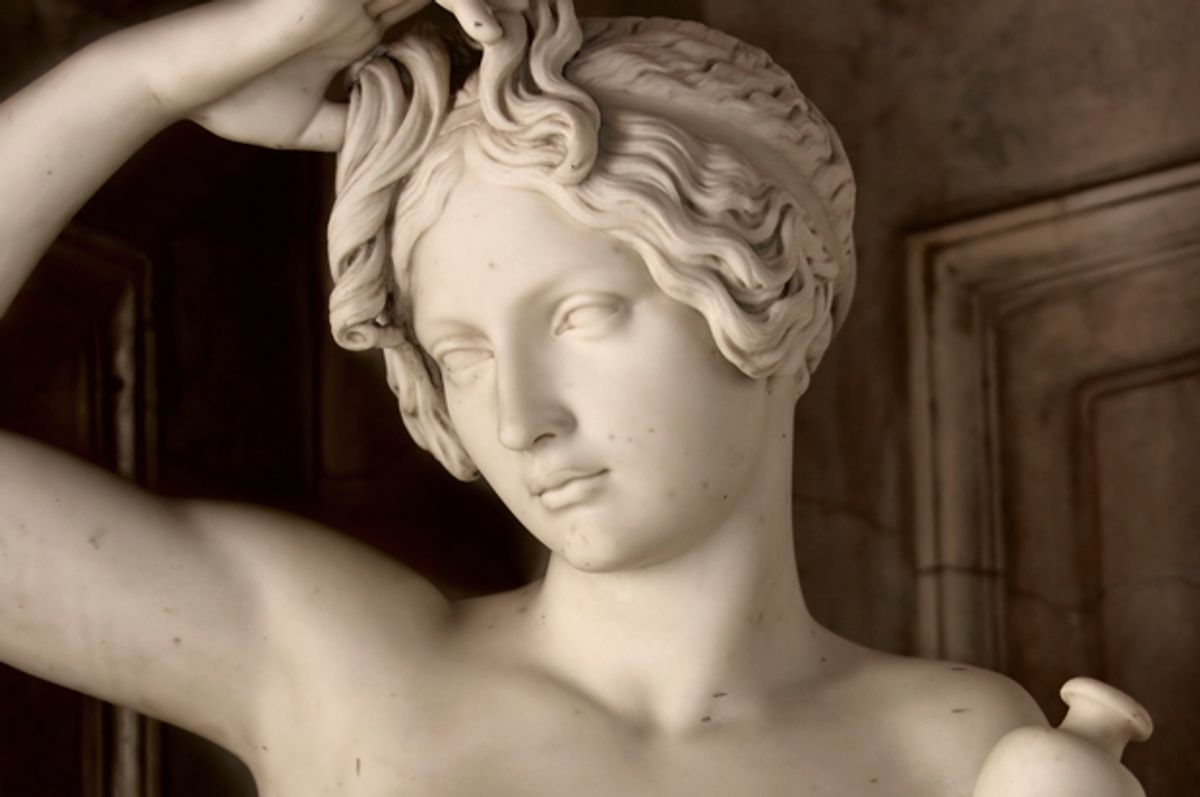The Classical Art Of Greece Set Standards Of Order
If you're looking for art ideas information you've come to the ideal site. Our website gives you hints for seeing the bigget art quality images content, find all your enlightening images that match your interests.
Greek And Roman Art And Architecture Theartstory
From the archaic period were the figures were represented static frontal with a typical smile and almond eyes.

The classical art of greece set standards of order. Attic Red-Figure Kalpis depicting three maenads 6th Century BC via Christies. Timeline of Ancient Greek Art Architecture. Greece The Classical Period 500-336 BC From the Persian Wars to the conquests of Philip II of Macedonia.
This order was employed in both Greek and Roman architecture with minor variations and gave rise in turn to the Composite order. Of course they were reflective of Greek Humanistic belief in the nobility of man and. It was during this period that human statues became so heroically proportioned.
Classical Greek architecture was innovative in its time bringing us the Ionic Doric and Corinthian architectural orders. Drama and History The Greeks invented drama as an art form and built the first theaters in the West. The Corinthian order is both the latest and the most elaborate of the Classical orders of architecture.
Classical Greek sculpture left behind the Kouros male and Kore female figures of Ancient Greece and began to emphasize natural poses motion and focused on an appreciation of human anatomy. Ancient Greek art stands out among that of other ancient cultures for its development of naturalistic but idealized depictions of the human body in which largely nude male figures were generally the focus of innovation. The building itself was constructed entirely of marble and richly embellished with sculpture some of the finest examples of the high Classical style of the mid-fifth century BC.
Like most Greek visual art building design reached its apogee during the Classical period as the two main styles or orders of Greek architecture the Doric and the Ionic came to define a timeless harmonious universal standard of architectural beauty. Erechtheum - temple from the middle classical period of Greek art and architecture built on the Acropolis of Athens between 421 and 405BC. Inside the magnificent Doric temple stood the colossal gold-and-ivory statue of Athena made by the Greek sculptor Pheidias.
Including innovations in painting sculpture decorative arts and architecture Classical Art pursued ideals of beauty harmony and proportion even as those ideals shifted and changed over the centuries. The Classical Period of ancient Greece was a time when the Greeks achieved new heights in art architecture theater and philosophy. Summary of Classical Greek and Roman Art and Architecture.
The Classical Period began with the. Ancient Greek art and culture have become cornerstones of modern western society. In its purest form classicism is an aesthetic attitude dependent on principles based in the culture art and literature of ancient Greece and Rome with the emphasis on form simplicity proportion clarity of structure.
Tragedy a serious drama about common themes such as love hate war or betrayal. The Greek values of harmony order balance and proportion in art served as the standard for what became known as. The Doric style was the more formal and austere - a style which predominated during the 4th and 5th centuries - while the.
In constant search to find its own personal aesthetic it can be perceive a great achievement in artistic overcoming that never stop studying the surrounding nature and considering man as the. Classical Art 480-323 BC was created during a golden age from the time Athens rose to prominence to Greek expansion and right up until the death of Alexander the Great. Democracy in Athens was refined under the leadership of Pericles.
It remains present in popular culture and one can see its reiterations on film art architecture and literature. Their val-ues of harmony order balance and proportion became the standard of what is called classical art. Until the classical period with the aesthetic refinement and detailed realism develop by this Greek culture.
The rate of stylistic development between about 750 and 300 BC was remarkable by ancient standards and in surviving works is best seen in sculpture. Greek sculptors also tried to capture the grace of the idealized human body in motion. The Erechtheum contained sanctuaries to Athena Polias Poseidon and Erechtheus.
Classicism in the arts refers generally to a high regard for a classical period classical antiquity in the Western tradition as setting standards for taste which the classicists seek to emulate. Classical and Hellenistic Periods. The Doric Order was the first style of Classical Architecture which is the sophisticated architectural styles of ancient Greece and Rome that set the standards for.
Coming out of the Dark Age in which most Mycenaean and Minoan art disappeared the Greeks mostly created art with repeated shapes and patterns in an era known as the Geometric period. Classical Art encompasses the cultures of Greece and Rome and endures as the cornerstone of Western civilization. The Greeks values of harmony order balance and proportion became the standard of what is called _____ ____.
A __ was a serious drama about common themes such as love hate and betrayal. While Greek artisans continued to develop their individual crafts storytelling ability and more realistic portrayals of human figures throughout the Archaic Period the city of Athens witnessed the rise and fall of tyrants and the introduction of democracy by the statesman Kleisthenes in the years 508 and 507 BCE. They wanted to portray ideal beauty not realism.
The Secret History Of Beauty How The Greeks Invented Western Civilization S Biggest Idea Salon Com
Classical Greek Culture Article Khan Academy
Timeline Of Ancient Greek Art Architecture
Greek And Roman Art And Architecture Theartstory
Greek And Roman Art And Architecture Theartstory
Late Classical Greek Sculpture